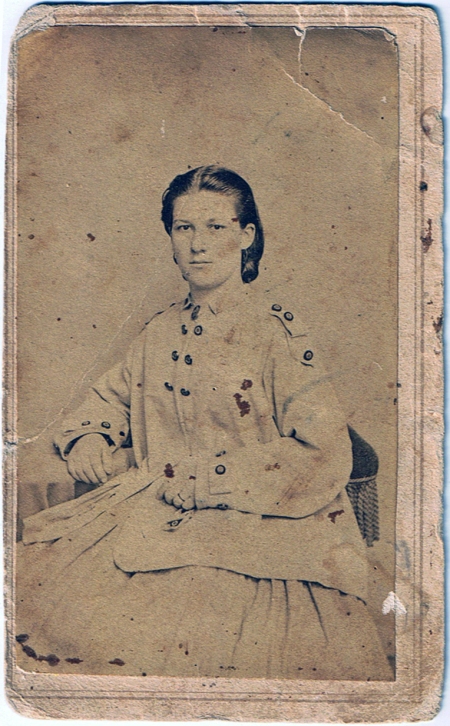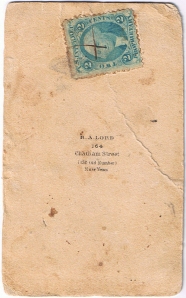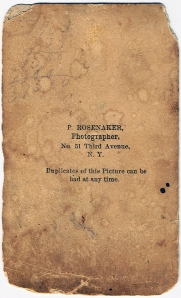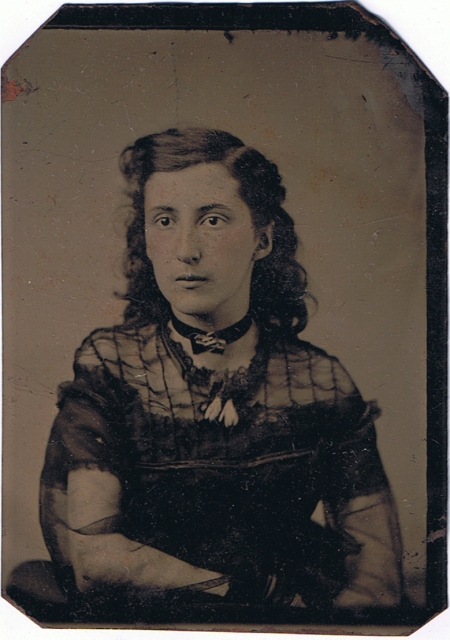
Backmark: None
Date: c. 1870
Subject: Seated young woman
Location: Unknown
Note: I’m really not sure about the date of this tintype. This style of ruched bodice was especially popular from around 1865 through the early 70s, and the dropped armscye suggests a date closer to 1865, but loose hair is an 1870s fad, as far as I know. I’d appreciate any leads on comparanda to date this better.
Dress: This young woman wears a sheer dress over an opaque underdress. The bodice is shirred over tiny cords, and appears to be only on a yoke, ending at about bust level. The sleeves are long and full, coming from a dropped armscye and ending in a ruffle at the cuff. There appears to be decorative piping (tubes of fabric applied to the surface, not filled with cord) at the front yoke, armsyce, and cuffs. The jewel neckline of the dress is finished with a dark lace frill and a bow with flowers of some sort- possibly wax buds.
The underdress is probably entirely separate from the outer dress, and made of silk taffeta. I have seen several extant examples of this kind of dress, but never in any color but white. The ensemble she wears may be black, or another color that photographed dark, such as red. All of the extant dresses I have seen have been plain white organdy, but because this one is colored it may be silk.
Her skirt is not visible, but based on originals I have seen it probably consists of a skirt with a small train, and an overskirt which has been gathered up to form a polonaise, bustling out at the back. She would wear a cage crinoline with a small bustle pad in back
Jewelry: She wears a black choker pinned at the throat with a metal brooch.
Hair: Her hair is worn faddishly loose and side-parted. To the contemporary viewer, she probably would have looked rakish in the free-spirited way that young women often do. When worn by women, the side-part had for decades prior carried an association with radical ideas and masculine bravura. Loose curls, likewise, signified a free spirit, compared to the tight, slicked-back buns that were worn since the late 1830s.
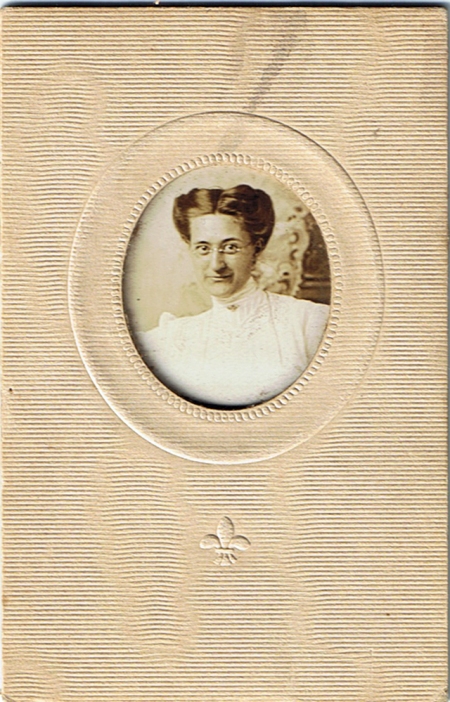


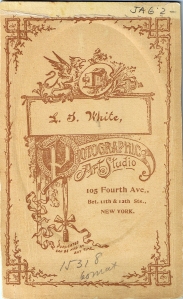

 Backmark: Houston 307 King Street S.C. [handwritten: “Amelia Vans——-“]
Backmark: Houston 307 King Street S.C. [handwritten: “Amelia Vans——-“]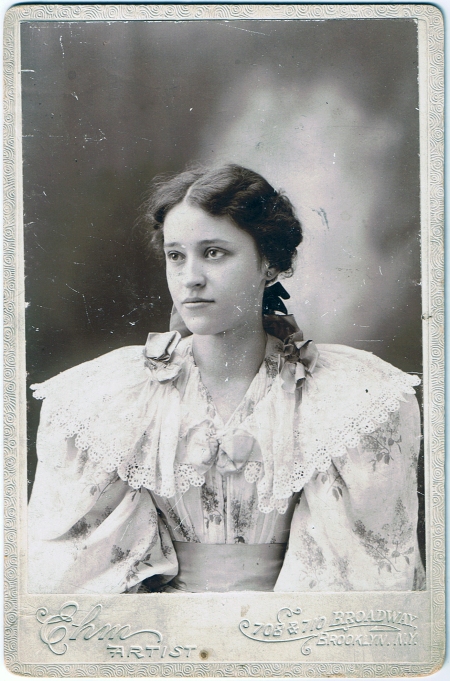
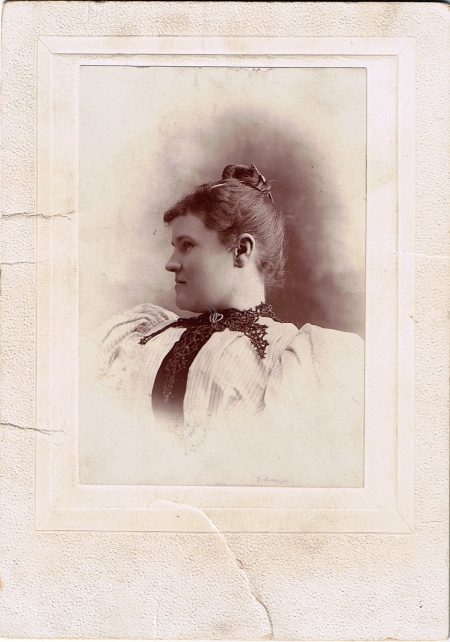
 Backmark: [in pencil: For Alice- With love from Coz. Nellie. Easter, 1896.”] In ink: ” Miss Nellie Lemon daughter of James Lemon a brother of Jos Lemon 2?? Cousin of F A Lemon 2” Alice May Lemon
Backmark: [in pencil: For Alice- With love from Coz. Nellie. Easter, 1896.”] In ink: ” Miss Nellie Lemon daughter of James Lemon a brother of Jos Lemon 2?? Cousin of F A Lemon 2” Alice May Lemon
